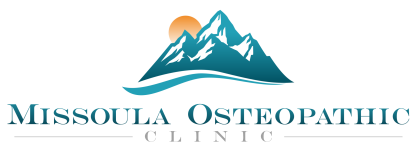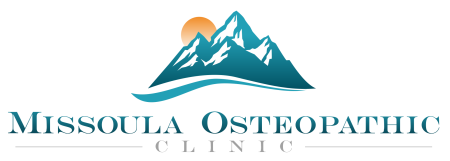Platelet-Rich Fibrin/Plasma (PRF/PRP) Injections
Platelet-rich fibrin/plasma (PRF/PRP) therapy uses a patient’s own blood to promote healing. PRF/PRP is derived from a small blood sample, which is processed to concentrate the platelets—cells responsible for healing and tissue regeneration. This concentrated PRF/PRP is then injected into damaged or degenerated joints and surrounding supportive structures, helping to speed up recovery and alleviate pain.
PRF/PRP injections are highly effective for various conditions, including:
- Osteoarthritis: Helps reduce pain and promote cartilage regeneration in degenerating joints.
- Tendon Injuries: Aids in healing conditions like tendinitis and tendinosis.
- Ligament Injuries: Supports recovery from sprains and tears.
- Chronic Joint Pain: Provides relief for patients with persistent pain due to previous injuries or degenerative conditions.
- Sports Injuries: Helps athletes recover from acute injuries and return to activity.
- Intimate Wellness: Addresses urinary incontinence and sexual dysfunction.
Find the procedure consent paperwork here which includes:
- Pre-treatment instructions/Post-care instructions
- Acknowledgement of financial responsibility (signature required before treatment) -Informed consent form (signature required before treatment)
- Medical Research Release (optional signature, but encouraged)
Download the PRP/PRF Consent Paperwork (PDF)
Please reach out to the office with any questions! 406-327-0269
What is Platelet-Rich Fibrin/Plasma?
For 25 years, we’ve been utilizing Prolotherapy—the precursor to PRP injections—at Missoula Osteopathic Clinic. Prolotherapy has been used for over 2,500 years, with its roots tracing back to Hippocrates, who treated javelin throwers with dislocated shoulders using a similar approach to stimulate the body’s natural healing process. Prolotherapy involves injecting a concentrated solution of non-toxic irritants into ligaments and tissues surrounding a joint. This process mimics the stress of injury, attracting stem cells to the area and stimulating the body’s natural healing process.
Recently, PRP/PRF injections have taken the regenerative process to a new level. We now use the patient’s own platelets, which are far more powerful in attracting and stimulating the repair of damaged tissue. In our clinical experience, a single PRP/PRF injection can reverse up to 20 years of wear and tear on a joint, and a second injection can reduce an additional 30 years of stress and damage.
In both PRP and PRF treatments, a small sample of the patient’s blood is drawn and processed in a centrifuge to isolate the platelet layer. This platelet layer contains a variety of growth factors and biochemicals that enhance the body’s natural reparative process. Both PRP and PRF are approximately three times more effective than Prolotherapy, due to the concentrated stem cell-activating factors in platelets.
photos
The Difference Between PRP and PRF:
Platelet-Rich Plasma (PRP):
- PRP injections contain a small amount of anticoagulant, which prevents the blood and platelet layer from solidifying before the injection. This makes it easier for the injector to handle and ensures that the fibrin matrix (the clot) does not form prematurely.
Platelet-Rich Fibrin (PRF):
- Unlike PRP, PRF does not use an anticoagulant. Instead, the blood and platelet layer are kept at a cool temperature, allowing them to remain in liquid form long enough to complete the treatment. However, once injected, the platelets quickly warm to body temperature, triggering the healing process almost immediately. This rapid response gives PRF an advantage over PRP, where the anticoagulants delay the onset of healing.
Which is Better: PRP or PRF?
Currently, our clinic primarily uses PRF injections, as we believe the immediate healing response provides superior outcomes. However, there may be cases where PRP is more appropriate, and our providers assess each case individually to determine the best course of action.
Assess The Age of Your Joints
Take our 20-question survey to receive a preliminary determination of the age of your joints! [INSERT LINK]
These 20 questions help you assess your joint health and how they have been impacted by lifestyle and medications. Some joints may be “older” or “younger” than expected based on age and lifestyle. For instance, someone who has been active since childhood, maintained a healthy diet, and avoided regular use of anti-inflammatory medications may have “younger” joints compared to someone of the same age with poor diet habits, inactivity, and regular use of anti-inflammatory drugs or herbs.
This idea of the health of your ligaments, combined with the assessment of a qualified Osteopathic Regenerative Medicine Physician at Missoula Osteopathic Clinic, will provide you with a comprehensive baseline to establish a regenerative treatment plan.
Please bring a copy of your results with you to your appointment or share via email missoulaosteopathic@gmail.com
How Do We Assess Joint Health?
With many people now using degenerative medications, joint deterioration is becoming more common over time. One key indicator of joint deterioration is ligament laxity—when ligaments become looser than usual. This often happens before arthritis is visible on X-rays or other imaging. At our clinic, we can examine ligament laxity in tandem with the survey to assess joint performance, understand the joint’s health, and predict the likelihood of future pain. If ligaments are strong and stable, joint wear will be slower, and the body’s natural regenerative process will keep damage to a minimum.
The Effects of Degenerative Medicine
As ligaments progressively deteriorate and medications inhibit the repair process, the ligaments become looser and weaker. The use of degenerative medications accelerates ligament laxity, which eventually outpaces the body’s natural repair mechanisms, causing the “joint age” to exceed the patient’s actual age.
Joint Health by Age (insert expected joint health table instead of this maybe?)
- A 20-year-old typically should have excellent joint stability and healthy joints.
- A 30-year-old will have good joint stability and good joints.
- A 40-year-old will have okay joint stability and average joints.
- A 50-year-old will have poor joints and reduced stability (joints may not hurt, but they are looser, wear is increased, and movement becomes less efficient).
- A 60-year-old will have damaged joints, and a typical 70-year-old will have critical joint issues.
While joint health varies from person to person, joints generally begin to hurt when they reach an unsatisfactory, bad, or critical state.
At Missoula Osteopathic Clinic, we are committed to offering state-of-the-art regenerative treatments to help you heal naturally. Ultrasound-guided Platelet-Rich Fibrin/Plasma injections offer a promising option for restoring joint health, alleviating pain, and enhancing mobility. If you’re struggling with joint pain or seeking innovative treatments for recovery, we invite you to explore the benefits of PRP/PRF therapy with us. Take the first step toward a more active, pain-free life today!
What Sets Our Approach to PRF/PRP Apart?
While Platelet-Rich Plasma (PRP) and Platelet-Rich Fibrin (PRF) injections are becoming more widely adopted in Regenerative Medicine, we at Missoula Osteopathic Clinic take a uniquely effective approach. Many studies have demonstrated the benefits of PRP/PRF in various joint areas. However, we believe the results of these studies fall short of their full potential. These studies typically show that PRP/PRF injections have an impact similar to that of steroid injections. We believe this outcome is unsurprising, given that the injection techniques used in these studies are limited to administering the injection directly into the joint, often with one or two additional spots surrounding the area.
At Missoula Osteopathic Clinic, we use PRP/PRF in a way that is vastly more effective than conventional steroid treatments, comprehensively addressing the joint and surrounding supportive structures .
Why do Traditional Steroid Injections Fall Short?
Steroid injections, commonly used by orthopedists and family physicians, are considered a quick fix for joint pain. However, this is what we call “Degenerative Medicine”, a short-term solution that often leads to long-term complications. While steroid injections may temporarily relieve pain, they accelerate joint degeneration, ultimately worsening the problem. This leads to earlier surgical interventions and eventual disability.
Will Exercise Regenerate Damaged Joints?
While exercise is crucial for maintaining joint health, it alone is unlikely to reverse significant wear and tear. Our approach helps identify the current health of your joints and the best path forward for regeneration.
The Real Problem: Damaged Ligaments:
The true cause of joint degeneration often lies in the ligaments surrounding the joint-ligaments that have become damaged and loose, allowing for abnormal movement and accelerating wear. When we treat only the joint itself (the symptom), we miss the root cause of the problem, which leads to the recurrence of pain and further degeneration.
The Power of PRP/PRF Injections: Targeting the Source of the Problem
At Missoula Osteopathic Clinic, we use PRP/PRF injections in a way that optimally targets both the joint and the surrounding stabilizing structures. By injecting into the ligaments that are allowing excessive movement and causing increased wear, we stimulate healing where it is needed most.
This approach offers far more rejuvenating outcomes compared to simply injecting PRP/PRF into the joint itself, as is commonly done at other clinics utilizing PRF/PRP.
How Our Approach Improves Joint Health
With our targeted approach, even a significantly worn joint can experience remarkable improvement. After just one session, patients often see an improvement of up to two categories
in joint health (for example, from poor condition to good condition). After a second session, the joint can improve by up to three categories (from okay condition to excellent condition). See expected joint health table here (link)
These results far exceed what can be expected from a steroid injection or a PRP/PRF injection that focuses solely on the joint itself, while neglecting the ligaments that caused the joint degeneration in the first place.
High Performing Results with a Comprehensive Approach
By addressing both the joint and the stabilizing ligaments, we maximize the regenerative potential of PRP/PRF therapy and provide patients with optimal outcomes—restoring not just the joint itself, but the entire area, stabilizing it for long-term health and function.
At Missoula Osteopathic Clinic, we are committed to revolutionizing joint regeneration by using the right treatment in the right places. Our comprehensive approach delivers more lasting, effective results than traditional methods, helping you regain mobility and health while avoiding unnecessary, long-term complications.
Call the office today to book a PRF/PRP consultation!
PRP for Intimate Wellness
Missoula Osteopathic Clinic introduces the “O-shot” into our practice. The O-shot is a form of PRP therapy (link to prf/prp page). In this case, the O-shot addresses conditions related to female sexual health and enjoyment.
This can treat:
- Stress Urinary Incontinence ( urine leakage which can be seen with aging, hormones, and following childbirth)
- Deterioration of the vaginal walls
- Diminished sensitivity of reproductive region
The O-Shot can improve blood flow, nerve sensitivity, and overall sexual function by regenerating tissue. Because this is a natural therapy that uses your body’s own platelets, there is minimal risk and no side effects.
When you come in for your procedure you will:
- Fill out consent paperwork.
- Have the treatment area numbed with topical medication (most people feel no pain during the procedure).
- Get your blood drawn and spun down to isolate the platelet-rich plasma.
Your practitioner will inject the plasma into the pelvic regions related to sexual function and satisfaction.
The healing and growth factors cause new cell growth and vascularization to occur over several months. Tissues become more supple, sensitive and elastic. They thicken and produce more lubrication when stimulated.
If you’re a woman who suffers from diminished sensitivity, inability to achieve an orgasm, or urinary incontinence the O-Shot® may offer a natural, minimally invasive solution.
Missoula Osteopathic Clinic delivers sensitive, professional care, ensuring comfort and respect during specialized treatments like PRP therapy for intimate wellness.
Missoula Osteopathic Clinic delivers sensitive, professional care, ensuring comfort and respect during specialized treatments like PRP therapy for intimate wellness.

